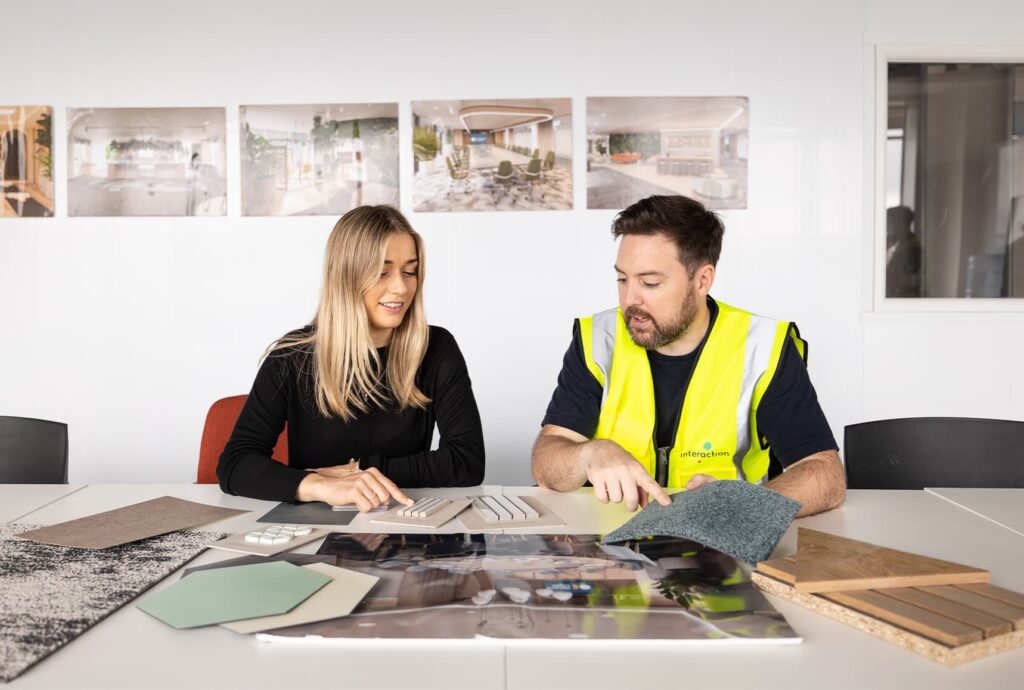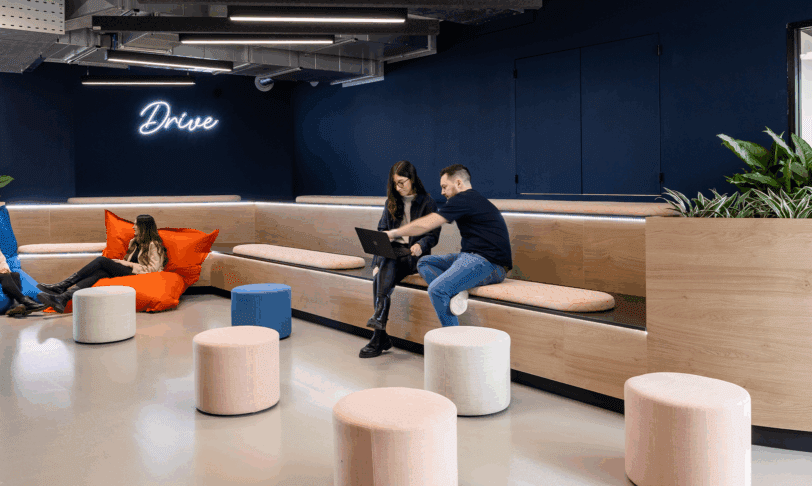How to succeed at design & build: a landlord’s guide to fitted space
You’ve chosen Design & Build. Now what?
With more landlords embracing Design & Build (D&B) as a faster, more accountable route to delivering fitted space, the next question is how to do it well. Choosing the right partner is only the start. Success depends on how you scope, structure, and manage the process, especially if you are working across multiple assets or markets.
This guide shares key principles for making D&B work in a landlord context, drawn from our experience delivering workspace for funds, developers and asset managers across the UK.
1. Get the brief right: develop a scalable employer’s requirements (ER)
Your Employer’s Requirements (ER) document forms the foundational blueprint for every D&B project. Establishing a robust and scalable ER is critical for ensuring consistency, maintaining quality, accelerating project mobilisation, and achieving alignment with your brand and investment strategy across your property portfolio.
Why a scalable ER matters:
- Consistency and quality: A well-structured ER ensures uniform standards of design, finish, and functionality across all properties, irrespective of location or scale. This consistency safeguards your brand reputation and enhances tenant satisfaction.
- Speed to market: A clear, comprehensive ER allows your delivery partner to rapidly mobilise, avoiding time-consuming clarifications and delays at the outset of each project. Projects can proceed swiftly from planning to delivery without compromising on quality or compliance.
- Cost and risk management: Clearly defined specifications help establish accurate budgeting and reduce unforeseen costs. A scalable ER provides visibility into expected expenditure, enabling more effective capital planning and reduced exposure to financial risk.
- Portfolio-wide ESG compliance: Integrating sustainability standards within your ER from the outset ensures environmental, social, and governance (ESG) goals are consistently met. This approach simplifies ESG reporting and enhances the appeal of your properties to environmentally conscious tenants and investors.
How to develop an effective ER:
- Early engagement with your D&B partner:
Collaborate closely with your delivery partner during the ER development phase. Their expertise can ensure specifications are practical, buildable, and aligned with realistic market benchmarks. - Define clear benchmarks and standards:
Clearly specify standards for finishes, materials, sustainability requirements, technical installations, and furniture and fixtures (FF&E). This avoids ambiguity and ensures alignment with tenant expectations and brand identity. - Embed flexibility for customisation:
While a scalable ER provides consistency, it should also allow flexibility to accommodate variations driven by tenant profiles, regional differences, or evolving market demands. Clearly delineate which elements can be customised and under what parameters. - Integrate sustainability from the start:
Ensure ESG considerations, such as certifications (e.g., SKA, BREEAM, WELL), low-carbon materials, energy efficiency, and circular economy practices, are embedded into your ER. Sustainability must be integral, not an afterthought. - Establish clear scope and cost parameters:
Precisely outline project scopes and expected cost bands. A clearly articulated scope helps eliminate costly mid-project adjustments, facilitates budgeting accuracy, and supports efficient procurement. - Utilise technology to streamline and standardise:
Leverage digital tools such as Revit for precise design coordination, Matterport scans for virtual project validation, and cloud-based project management platforms to maintain transparency and accountability throughout the project lifecycle.

Outcomes of a scalable ER:
A comprehensive and scalable ER positions your organisation to:
- Accelerate leasing timelines by reducing project delivery durations.
- Achieve predictable, repeatable cost management.
- Streamline ESG reporting and compliance.
- Enhance tenant satisfaction through consistent quality and clearly defined expectations.
Investing the time upfront to refine your Employer’s Requirements is a strategic step that ensures each Design & Build project delivers not just speed and efficiency, but meaningful, measurable value across your property portfolio.
Tips
- Involve your D&B partner early to shape a realistic, buildable baseline spec
- Include sustainability benchmarks and services scope such as furniture and styling
- Allow room for tailoring by asset or target tenant profile
2. Choose your delivery partner(s) carefully
Not all D&B providers are created equal. Some are focused on single-project tenant work. Others, like Interaction, have specialist landlord experience and national delivery capability.
Look for:
- Strong track record with ESG, pre-letting and marketing alignment
- Experience with landlord-led CAT A Plus and plug-and-play space
- Ability to scale across multiple cities or regions
3. Appoint a project manager who understands the model
Most landlords will appoint an external PM, and rightly so. But not all PMs are comfortable with D&B. Choose one who understands the dynamics of integrated delivery.
Best practice:
- Align on reporting, site sign-offs and decision gateways from the outset
- Brief PMs early on the D&B scope and team structure
- Encourage a collaborative tone with your chosen D&B partner

5. Use the right tools to speed up and de-risk delivery
Smart tech helps reduce ambiguity, support sign-off, and accelerate marketing. Your D&B partner should be using these tools as standard.
For example:
- Client dashboards for live progress tracking
- Revit for design coordination and visualisation
6. Keep communication tight – and human
Fast programmes require fast decisions. Weekly site meetings and clear reporting lines help. But so does chemistry.
Tips:
- Choose a team you trust to represent you on the ground
- Set expectations around communication rhythm and decision turnarounds
- Keep key stakeholders involved but avoid design-by-committee
7. Think beyond completion
A well-delivered D&B project is not just about handover. It is about tenant satisfaction, leasing success, and long-term asset performance.
To maximise value:
- Capture lessons learned and evolve your ER for future schemes
- Ensure the spec supports marketing and tenant flexibility
- Track ESG outcomes and certifications to support valuation
Design & Build done well is a strategic asset
D&B offers speed, control and clarity. Success depends on how it is set up. With the right team, tools and structure in place, landlords can deliver high-quality fitted space at pace, reducing voids, improving tenant experience and protecting value.
Want to explore how to apply this across your portfolio? Get in touch with the team at Interaction to discuss your goals, timelines and requirements.



